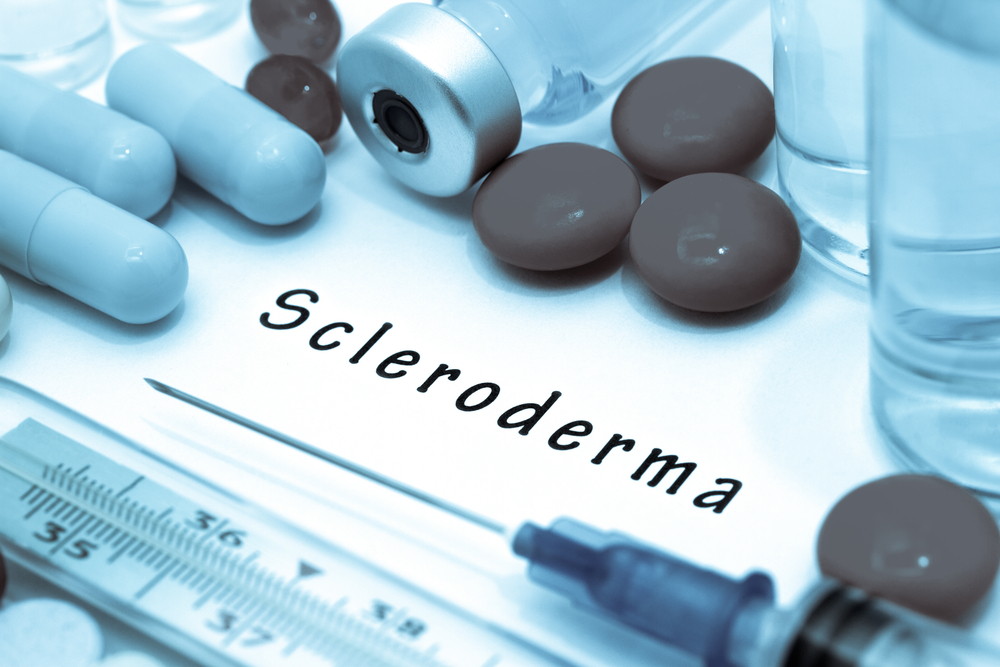Study Identifies by Disease Marker Those Scleroderma Patients Best, and Least, Suited to Take Part in Clinical Trials
Written by |

In a recent study, researchers identified advanced skin fibrosis at baseline as a predictor of likely regression — or disease improvement — in patients under standard of care measures in clinical trials, making this group the least ideal for inclusion in such trials. The study, “Prediction of improvement in skin fibrosis in diffuse cutaneous systemic sclerosis: a EUSTAR analysis,” was published in the journal Annals of the Rheumatic Diseases.
Scleroderma, also known as systemic sclerosis, is a chronic, systemic autoimmune disease characterized primarily by hardening of the skin. But it can progress to affect internal organs. Called “limited scleroderma” when it mainly affects affect the hands, arms and face, it is known as “diffuse scleroderma” when it involves other large skin areas and reaches organs such as the kidneys, esophagus, heart and lungs. But this progression varies widely in patients and the disease is considered highly heterogeneous, a factor making patient selection and management in clinical trials difficult.
“From a therapeutic perspective, there is general agreement that prevention of progression in patients with active skin fibrosis is one of the major treatment goals,” the researchers wrote. “However, it is much less established whether a therapeutic benefit can be achieved for patients who are already likely to show improvement of skin fibrosis under standard of care. … Therefore, in order to identify those patients who would benefit most from therapeutic interventions, it is important to identify patients with progressive skin fibrosis, and to be aware of patients with skin regression … and to exclude regressing patients under standard of care to increase the likelihood of [a study] identifying treatment effects.”
In this study, researchers aimed to identify predictors for improvement of skin fibrosis in patients with diffuse cutaneous systemic sclerosis. They performed a longitudinal analysis of the European Scleroderma Trials And Research (EUSTAR) registry, which includes patients with diffuse cutaneous systemic sclerosis — recognized by the American College of Rheumatology criteria — with a baseline modified Rodnan skin score (mRSS) of greater than or equal to 7, and a follow-up mRSS at 12 months. (The modified Rodnan skin score is the most widely used measure of skin fibrosis in clinical practice and of outcomes in clinical trials.)
The study’s primary endpoint was skin improvement, determined as a decrease in mRSS of greater than 5 points, and greater than or equal to 25%, at the end of the follow-up period. Patients who exhibited an increase in mRSS were considered to have disease progression.
From the initial pool of 919 patients, 218 (24%) showed improvements, while in 95 patients (10%) the disease progressed. Out of 11 candidate predictors analyzed for skin improvement, the researchers identified the absence of tendon friction rubs and high baseline mRSS as independent predictors of skin improvement. The latter measure was considered to be the strongest predictor of skin improvement, independent of disease duration.
These results suggested that patients with advanced skin fibrosis at baseline and the absence of tendon friction rubs are more likely to regress in a one-year period compared to patients with milder skin fibrosis. As a result, including a lower baseline mRSS as a criteria for patient inclusion in clinical trials will minimize the enrolling those patients who would regress during the trial.
“In conclusion, our study provides novel evidence-based data for cohort enrichment in clinical trials on skin fibrosis in patients with dcSSc [diffuse cutaneous systemic sclerosis],” the researchers wrote.





